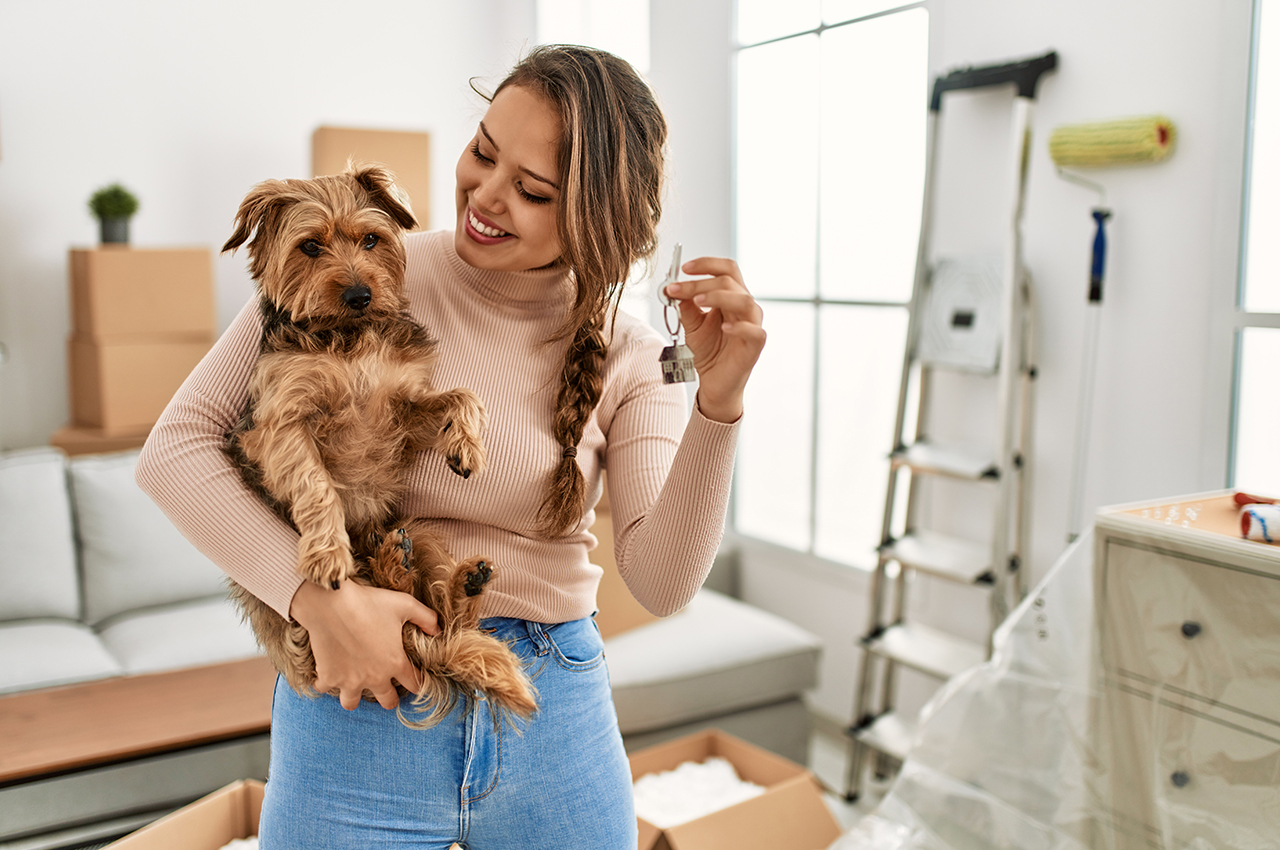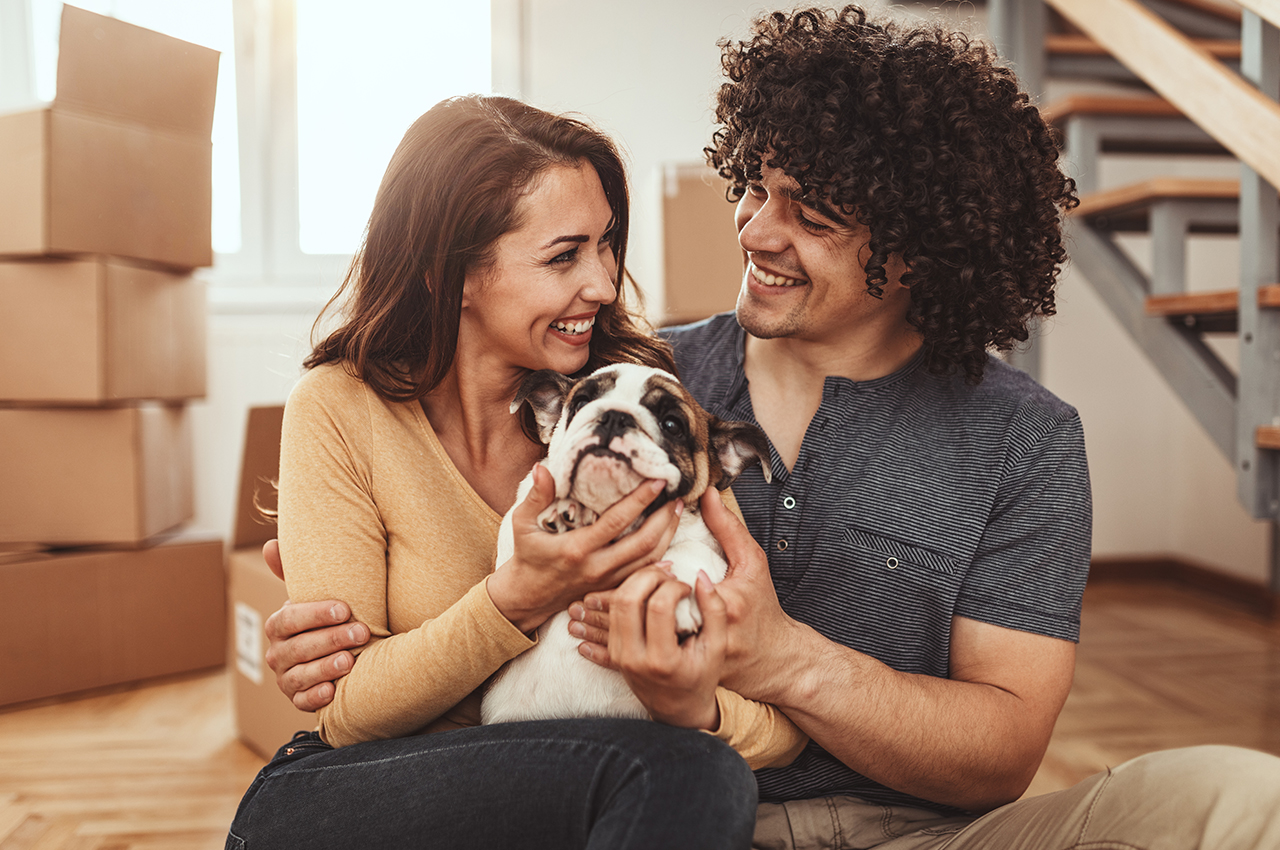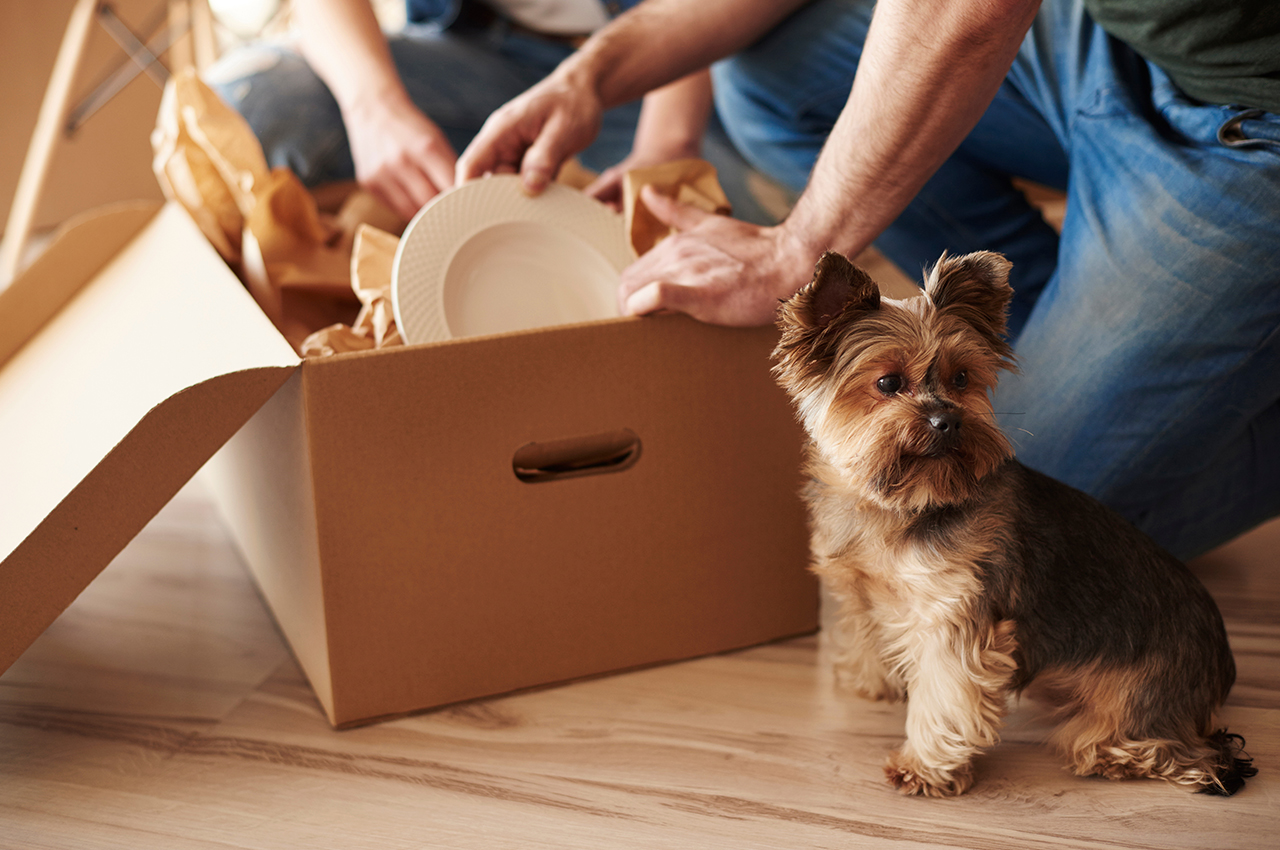Moving house with dogs: beating dog anxiety on the way to your new home

Moving house with dogs can be a stressful experience – and not just for the humans involved! All the new smells, sounds and surroundings can overwhelm a dog and make it feel uncomfortable. Some dogs do get more stressed than others as some won’t be phased at all. Like humans, it depends on their personality. By making the move as smooth and seamless as possible you will reduce the stress of it all on your best friend.
If your moving home with your furry friend, then we’ve put together a few things to ensure they settle in well! But first, let’s take a quick look at the costs involved.
The cost of moving home with a dog
Moving home with a dog shouldn’t increase your cost of moving significantly. If you have a car, it is always better to take them in the car with you as it will help you keep them calm whilst shaving a little off the overall price tag.
For those who don’t own a car, here you might need to shell out a little cash to pay for a dogsitter or kennel to look after your pet while things are busy or someone to help you move your precious pooch. Again, it is better to stay with your pet on the journey, so there is some familiarity along the way.
However, you can put them in the van if there’s no other option. You just need to make sure they are secure and loaded into the van properly along with your belongings. Moving in a van could be stressful for a dog though, so make sure that it won’t traumatise them before choosing this option.
Other costs involved might be:
- International pet relocation (for those moving abroad)
- Microchip and vet checkup
- Kennel costs
- Anxiety coat for large dogs
- Collapsible water bowl and treats for the journey

11 tips for moving home with a dog to reduce anxiety and stress
1. Checklists
Just like a checklist for all other aspects of moving house, you should have a checklist for your pets. Make sure you have everything they need and also make sure to change their registered address too. By adding them to your checklist you can ensure all your dog’s belongings are brought with them, and nothing is forgotten!
2. Make sure to get your dog microchipped.
Due to the stress of your move, your dog may be more likely to run off if they get startled by loud noises or things they are not used to. Make sure your dog has a collar and tag on it with their name, your name and contact number. Ensure it is also microchipped in case it gets lost and gets taken to the vet. This will ensure they are always brought back to you.
Don’t neglect this step even if it might cost a little. Remember: your dog isn’t familiar with the area yet, so if it does run off then it will get lost and won’t be able to figure its way back home.
3. Bring their favourite things with you
If you bring their favourite toys, their bed, blankets etc. then this gives them a sense of comfort and familiarity with home. It will also have the scent of your old home which will help de-stress your dog.
It’s critical to provide your dog with familiar sights, tastes and smells when moving home as dogs don’t can struggle to adapt to large changes. by bringing items they associate with home, you will help them to settle in. will help them to settle in.
4. Spend plenty of time with them
After a few days, your dog will soon realise that this is their new home. Having their ‘pack’ (you and your family) around them is important. If you can take a few day’s holiday, work from home or make sure someone is home with them for most of that first week that will really help with settling them in.
If you’ve got to go out, take your dog with you if you can. If not then, try to make it a short outing. If you have to leave the house and it’s going to be for a long time, check if a family member or a friend can help out and dog sit for a while. Try to gradually increase how much you leave your dog alone at the early stages of your move to gradually ease them into their new lifestyle.
5. Get them into a routine
Dogs love routine and if you can establish that routine from the beginning you will find that this will be a big help in reducing the stress of moving house with your dogs. By running through your daily routine, you are giving your dog familiarity with the associations of their old home and that routine. If you can keep your routines similar in your new home, then this is an added bonus.
The more time that passes, the more used to this new routine your dog will get it. They will eventually settle in and it will be like nothing ever happened.

6. Make a fuss about them
All dogs love attention. Kisses and cuddles. Anyone who owns a dog knows how affectionate they are with their family. Make sure to make a big fuss about them and really make them feel loved during those first couple of weeks.
Play with them, get them toys, give them treats and take them out for plenty of walks to take their mind off the move.
7. Give them their space too
As much as dogs love being cuddled, some dogs like to have their own space too. If you have a dog who likes to chill on its own sometimes, then make sure to give it somewhere to chill. Allocate them a space where you can put their dog bed, food, water and toys – this gives them somewhere to go and relax, free of interruption.
Dogs are very responsive to their owners, family and surroundings. A good place to set up this calm space (if you have room) is your living room. It means they can still be around you but also have their own spot too.
8. Take them for plenty of walks
Taking your dog out for walks is not only great for their physical health but also great for their mental health. It will de-stress them and help them to settle in. It can also tire them out too, which is handy for them settling in, as they will fall asleep quicker.
9. Keep them occupied
If your dog begins to stress out and is pacing around and whining, then try to do things with them to keep them occupied. Firstly, some of the above are great to keep them occupied such as taking them for walks and playing with them. Another good idea is to give them a good chew toy which they can have a go at for a while.
Dogs will also get distracted by strong-smelling food so you may find that when you start cooking this will take the moving stress of their mind and they will become focused on the food you are making. The same can be said of sounds and sights, so make sure to provide lots of ways to keep your pooch stimulated.
10. Therapies and products
If your dog is still anxious and stressed after you have implemented the previous steps, then there are a lot of therapies out there to help with that.
Dogs love massages and this is a great way to bond with your furry friend and to give them a bit of a pampering session too. There are lots of products out there too from herbal supplements to plug diffusers that could be ideal for your dog. Just like humans though, every dog is different, and it may take a bit of trial and error to figure out which things they like or aren’t fussed about.
11. Staying calm
You need to be calm yourself to ensure your dog stays calm too. Dogs read our body language, so they will easily be able to pick up when we are stressed and this will reflect in their behaviour just like it does in humans.
If your dog is acting up and not going to bed, barking or howling then be patient with it. By getting annoyed with the dog, you will make matters worse, and this can confuse the dog as well. A lot of dogs get anxious and the first week can be difficult. However, by staying patient with them then you will ensure your dog doesn’t get stressed and remains happy.
Good luck with your move!
We hope this crash course guide has given you a good insight into moving house with dogs, so you won’t go barking up the wrong tree. By following these simple tips you’ll be sure to eradicate any residual dog anxiety when moving to your new home with your canine friends.
